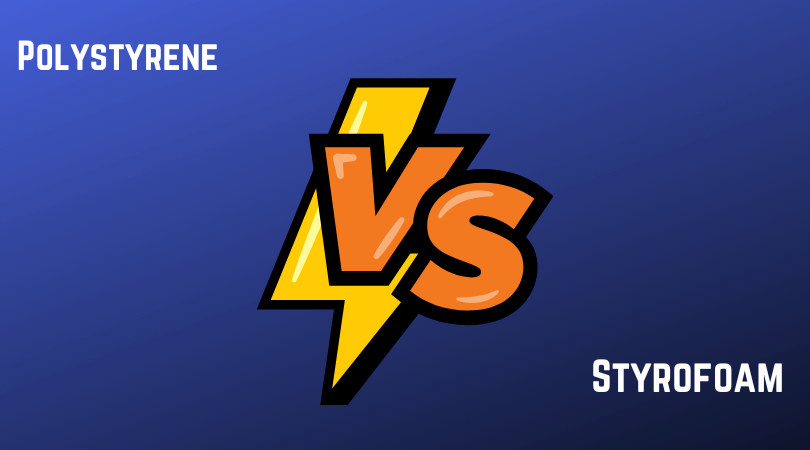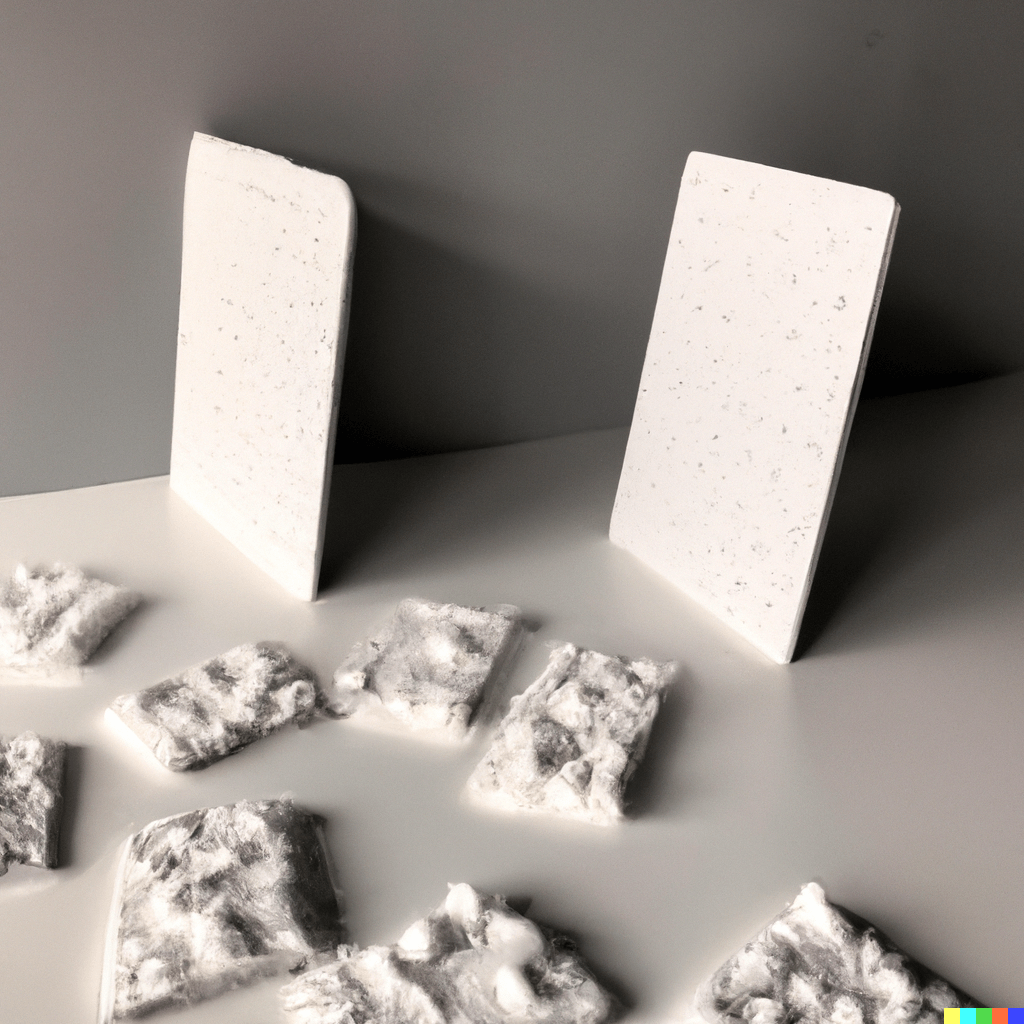Greetings everyone! Today, I’ll clarify the long-standing confusion surrounding the difference between polystyrene and styrofoam.
Are they the same thing? Is styrofoam polystyrene, or vice versa? I’ll present an informative article that will answer these questions definitively and help you understand the distinctions between styrofoam and polystyrene.

Polystyrene vs Styrofoam
Polystyrene is a widely used polymer material derived from the monomer styrene. Styrofoam, on the other hand, is a specific form of polystyrene. The primary difference between polystyrene and Styrofoam is that polystyrene is a synthetic aromatic hydrocarbon polymer, while Styrofoam is a commercial brand of polystyrene.
Styrofoam VS Polystyrene: What is Polystyrene?

Polystyrene, a synthetic aromatic hydrocarbon polymer, originates from the monomer styrene.
It exists in two distinct forms – as a solid or as foam. This material boasts a transparent, complex, and somewhat brittle nature.
Moreover, it is cost-effective per unit weight, although it doesn’t effectively resist oxygen and water vapor.
Comparatively, polystyrene has a lower melting point. It is transparent and can be dyed using colorants.
This thermoplastic polymer remains solid at room temperature but starts to flow when heated above 100°C.
Consequently, this temperature represents the material’s glass transition temperature.
Once cooled, it returns to its rigid state. Unfortunately, polystyrene’s biodegradation process is exceedingly slow.
Given its prevalence as litter in the environment, it is crucial to minimize its usage.
The compound’s chemical formula is (C8H8)n, with a melting point of 240°C. Its chemical structure reveals a long-chain hydrocarbon with an alternating sequence of phenyl groups attached to the carbon chain.
Styrofoam VS Polystyrene: What is Styrofoam?

Styrofoam is a well-known trademarked brand of polystyrene, explicitly belonging to the closed-cell extruded polystyrene foam (XPS) category.
This material is easily recognizable by its light blue hue and is owned by The Dow Chemical Company.
Comprised of approximately 98% air, Styrofoam is lightweight and buoyant.
Styrofoam is made by expanding polystyrene, a petroleum-based polymer, with a blowing agent like pentane or carbon dioxide.
The process creates a lightweight foam with trapped air pockets, making it an excellent insulator and versatile material.
The versatility of Styrofoam allows for numerous applications, particularly as a building material.
It is commonly utilized in building insulation sheathing, pipe insulation, and beneath roads and other structures to avert soil disturbances caused by freezing.
Styrofoam is also found in structural insulated panels and is popular among florists for crafting purposes.
Applications
While both materials are popular choices for various industries, they each have their own set of applications:
Polystyrene
Packaging: Expanded polystyrene foam (EPS), less dense and less rigid than XPS, is commonly used for packaging fragile items and electronics.
Food Service: Disposable cups, plates, and cutlery are often made from polystyrene.
Arts and Crafts: Polystyrene balls, sheets, and other shapes are famous for crafting projects.
Styrofoam
Insulation: Styrofoam’s excellent insulating properties make it a popular choice for building insulation, particularly in the construction industry.
Floral Arrangements: Florists often use Styrofoam blocks and shapes to secure and arrange flowers.
Crafting: Styrofoam is also used for various crafting projects, such as model building and wreath making.
What is the Difference Between Polystyrene and Styrofoam?
| Feature | Polystyrene | Styrofoam |
| Material Type | Synthetic aromatic hydrocarbon polymer |
Closed-cell extruded polystyrene foam (XPS)
|
| Forms | Solid and foamed (EPS) | Foam only |
| Transparency | Transparent (solid form) | Opaque |
| Insulating Properties | Poor (solid form), moderate (EPS) | Excellent |
| Common Applications | Packaging, disposable food ware, crafts |
Building insulation, floral arrangements
|
| Density | Varies (higher for solid form) |
Lower, lightweight
|
| Environmental Impact | Slow biodegradation, difficult to recycle |
Slow biodegradation, not easily recyclable
|
| Cost | Generally more affordable |
More expensive but offers better insulation
|
Polystyrene is a synthetic aromatic hydrocarbon polymer, whereas Styrofoam is a trademark brand of polystyrene.
This makes the difference between polystyrene and Styrofoam. Polystyrene appears transparent.
However, various forms of polystyrene have different colors because of adding colorants. For example, Styrofoam has a light blue color.
Moreover, another difference between polystyrene and Styrofoam is that polystyrene is available as both a solid product and a foam product, but Styrofoam is available only as a foam product.
There is also a difference between polystyrene and Styrofoam in their uses. Styrofoam is mainly manufactured as an insulation material in buildings and roads.
Summary
To sum up, polystyrene vs styrofoam is frequently misunderstood, yet they possess unique properties and uses.
Polystyrene comes in solid and foam forms, catering to packaging, disposable tableware, and creative projects.
In contrast, styrofoam, an extruded form of polystyrene foam, shines in applications such as building insulation and floral design.
Grasping their differences is essential for making well-informed decisions and encouraging responsible material consumption across diverse sectors.
Quick Navigation
